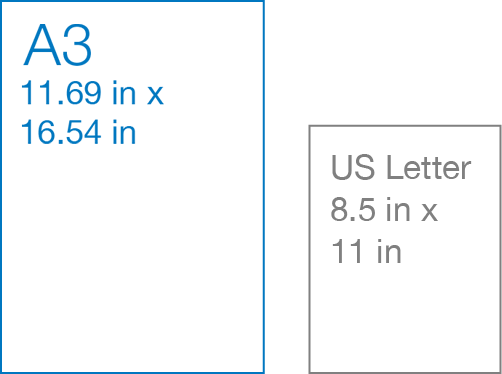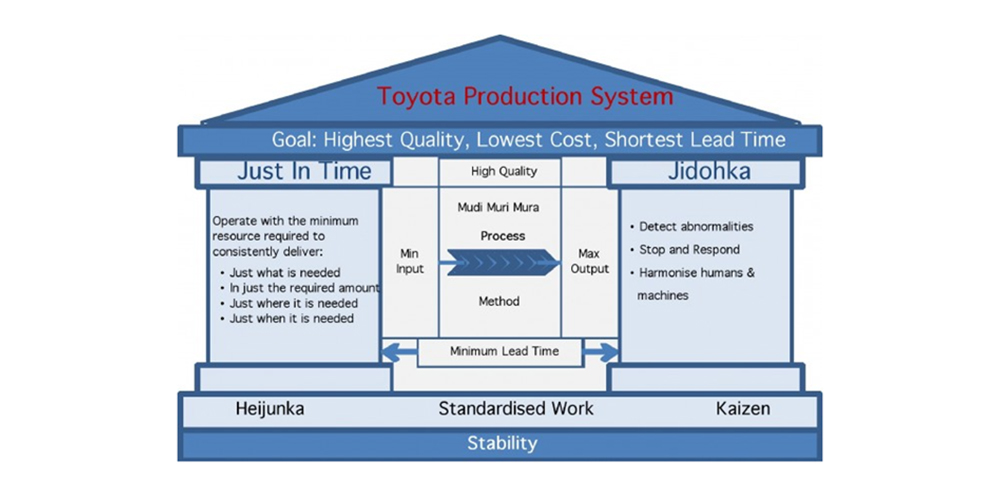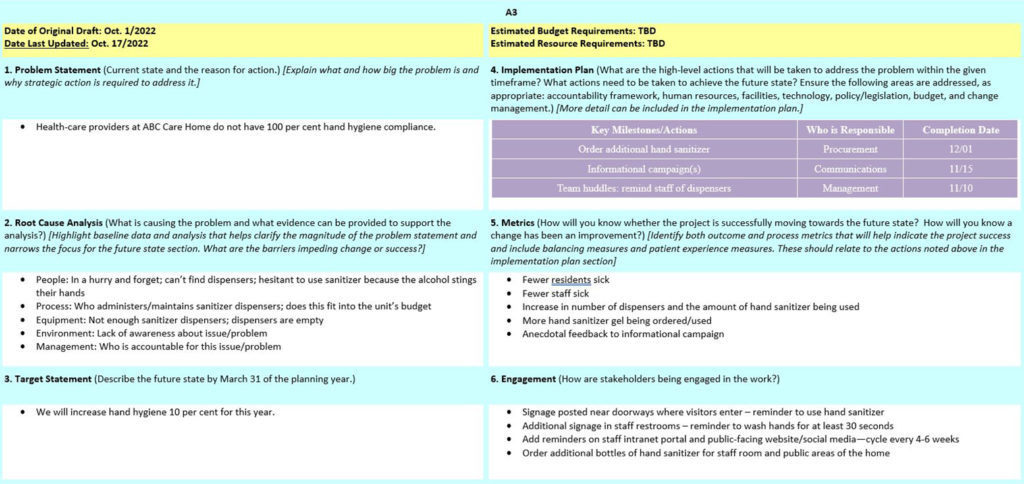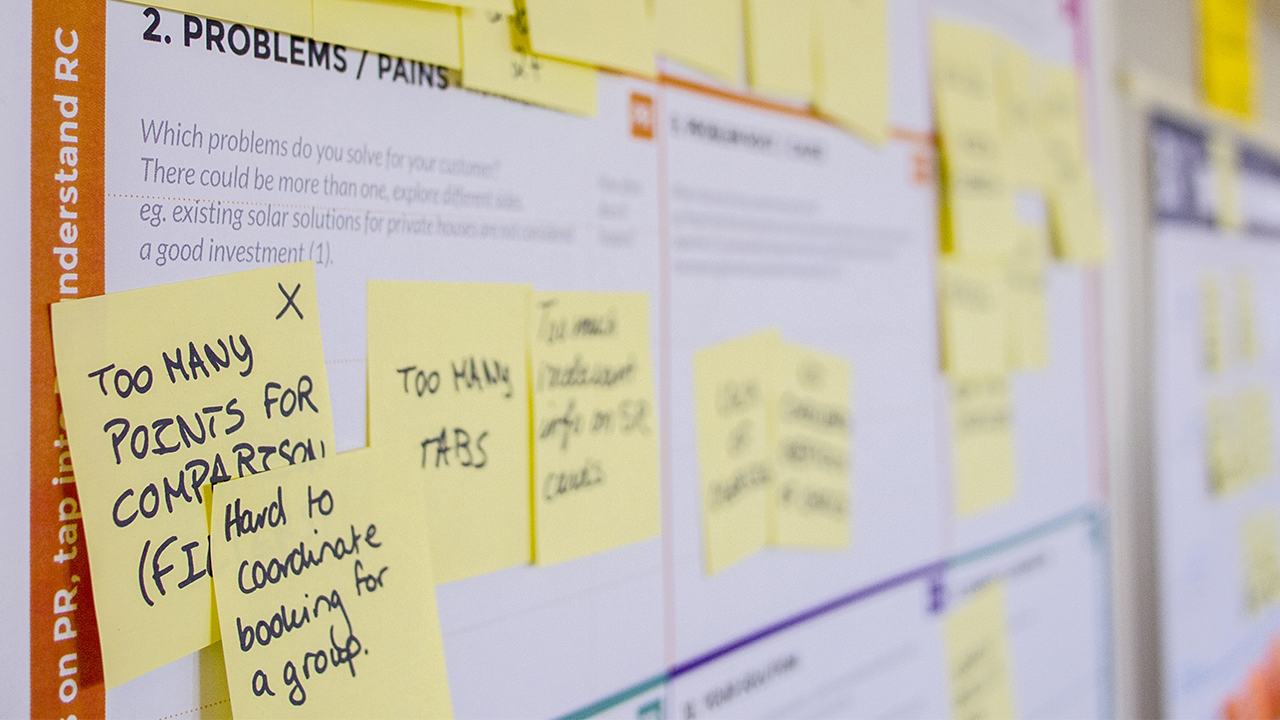
At first glance, you may write off the A3 as a simple problem-solving tool. Named after the size of paper it’s printed on (approximately 11 by 17 inches), this humble but mighty tool provides a framework for continuous improvement that can be used across several industries. There are many layers to this onion so sit back while we take a deep dive into what it all means and how it can make your life better.
Table of contents
- Introduction and applications
- A3 structure: Rigour, standardization and documentation
- Process
- Benefits of using the A3
- Tips for more efficient A3 forms
- Making A3s work for you
Introduction and applications
The A3 form’s origin story harkens back to the Toyota Lean Management system as part of its production process. That said, A3s certainly have application in other industries, including health care; many health organizations use it to examine processes ranging from quality improvement (QI) to patient care.

Historically, the A3 form has been used as a problem-solving tool, as it has a structured mechanism to organize our thoughts. However, it is a flexible tool, and can also be used for other purposes such as strategy development and reporting. This may require modifying the questions slightly to fit your application—for example, a problem solving A3 can have up to eight steps, while a proposal-style A3 sticks with the standard six steps. This should not affect the rigour of the tool if the same components largely remain intact and in the same order
Additionally, by documenting the thought process, the A3 can serve as a powerful communication tool to succinctly tell the project’s story. This can be helpful when engaging with both internal and external stakeholders. Currently, HQC uses a modified version as a tool to support our project management and reporting processes. This one-page snapshot is updated quarterly.
A3 structure: Rigour, standardization and documentation
The A3 form breaks down problem solving by creating sequential boxes (numbered 1-6). This allows the user to focus on one aspect at a time, in a linear fashion. The left side focuses on clarifying the problem, while the right side is more reactionary—what are you going to do about it? Additionally, the amount of space allocated to each component is intentional to inspire brevity (if you can’t say it with one page, you’re not concise enough, says QI leader KaiNexus) while providing enough space to include relevant details.
While the rigour of the form allows teams to have a consistent approach to problem solving, in documenting the process, an A3 can also serve as a communication or reporting tool to concisely share the methodical approach to addressing the problem.
Process
You may have encountered terms associated with the A3 form—such as A3 thinking and A3 process. This is the term applied to the process of working through the problem in a systematic way, using the A3 form as a template or guide.

Using the example above, we can identify six steps:
- Problem statement: Describe the problem you are trying to solve. What is the current state and the rationale for the action? In this case, it’s a lack of hand hygiene in a long-term care home.
(Note: Some templates split problem identification and the current state description into separate boxes. The current state could also include visuals such as a process map to articulate the scenario.) - Root cause analysis: Analyze what is causing the problem and the evidence to support the analysis. Here it is helpful to incorporate baseline data. There are some QI tools that can help with the root cause analysis, such as a fish bone diagram and 5 whys exercise—categories such as people, process, equipment, environment and management are common.
- Target statement: Identify what future state looks like by a certain day (in our form, it is based on the March 31 planning year). Be specific.
- Implementation plan: Describe key milestones, who is responsible to complete them and by when.
- Metrics: Identify how will you know if the approach is successful.
- Engagement: Describe how relevant stakeholders are engaged in the plan.
While there isn’t universal consensus on the specific steps, most A3 forms generally align with the plan, do, study, act (PDSA) cycle–where the left-side is the plan portion and the right side is the do, study, act portion of the cycle.
Benefits of using the A3
The A3 builds critical analysis skills—that is, an ability to look at a process and, using data, objectively assess how to improve it. This requires practice to improve and stay sharp, like practicing a sport or a hobby. Over time, however, it helps us to think quicker and become more responsive problem solvers—and less likely to jump to conclusions or bandage solutions.
A3 are also a useful collaborative tool. They promote team consensus-building and provides a method to approach problems in a standardized way; this streamlining of processes allows for greater efficiency and less wasted resources. It can also capture the status of a project at a point in time and support a team in communicating, on one page, the rationale, current state and future state of a project.

Tips for more efficient A3 forms
Here are some tips so you too can complete your A3 like a pro:
Never A3 alone: Think back to your childhood and the buddy system when completing an A3 form. This tool was made for collaboration to allow diverse perspectives, especially on the root cause analysis portion. One option might be to do individual reflection on why the problem is happening, then discuss as a group.
Follow the order: It may be tempting to jump ahead to solutions without fully examining the other steps. However, to fully consider the problem at hand (and devise the best solution possible), it’s advised to go through each of the steps, in order.
Allow yourself time: Root cause analysis accounts for about 70 per cent of the A3 process, so allocate accordingly.
Lather, rinse, repeat: As much as the A3 form components align with the PDSA cycle, the form itself is also meant to be reviewed and updated until the problem is solved—it is recommended you use a pencil or, if working on an electronic document, mark it as a draft.

Making A3s work for you
The A3 form is a flexible, dynamic tool used by QI professionals in countless industries and areas of work, and typically align with the PDSA cycle. The form itself is just one aspect of A3 thinking, which is a wider-scale and involves process management to address the root cause of issues. This structured, systematic approach is useful for comprehensively examining an issue, building group consensus and ultimately creating consistency in the problem-solving process. The next time that you have a problem and need to document the thinking (with perhaps larger stakeholder groups involved), using the A3 may be a helpful tool for you.
Other resources




